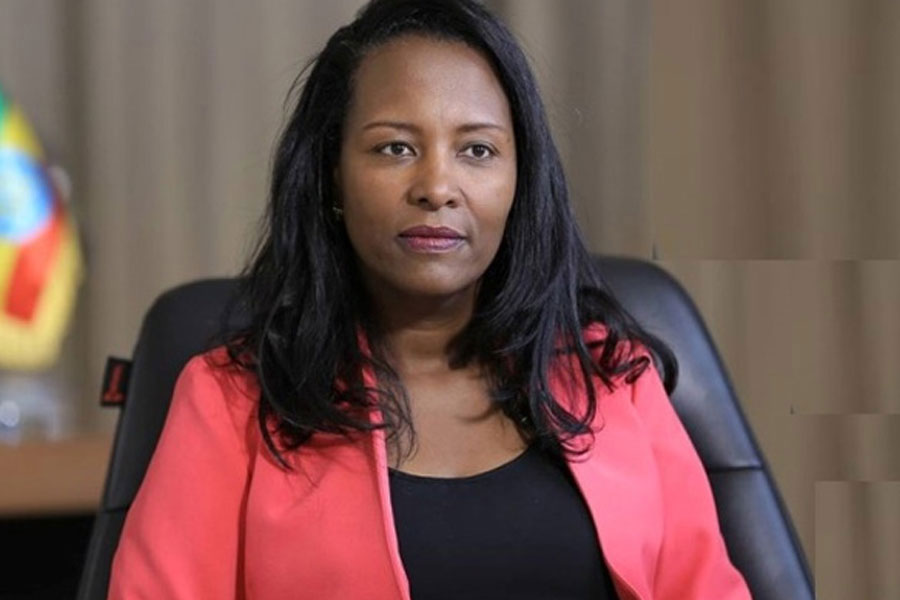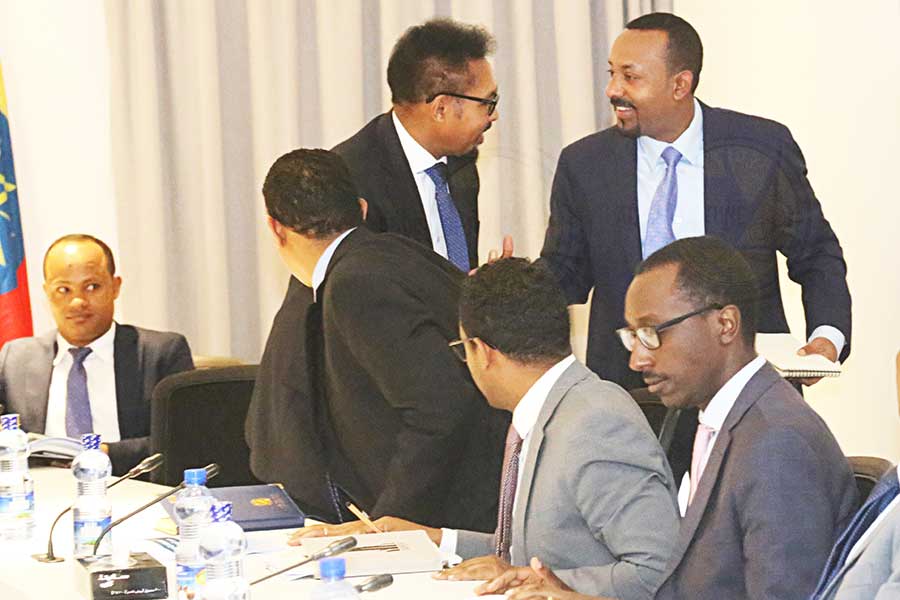
Mar 6 , 2021
By Hannah Wanjie Ryder , Gyude Moore
Since the International Monetary Fund already has the ability to inject liquidity into the global economy through its reserve asset, it is understandable that many would advocate the use of this mechanism to help struggling developing economies. But in their current form, SDR allocations leave much to be desired, write Hannah Wanjie Ryder, senior associate at the Center for Strategic International Studies Africa Programme, and Gyude Moore, senior policy fellow at the Center for Global Development.
With the arrival of US President Joe Biden's administration, calls for a fresh allocation of special drawing rights (SDRs), the International Monetary Fund’s (IMF) reserve assets, have gained new momentum. Yet while such proposals are supposedly geared toward assisting developing countries hit hard by the COVID-19 pandemic, SDRs are allocated according to a country’s IMF quota and voting share rather than its needs. As such, the vast majority of any new allocation would go to wealthy countries.
This was fine in September 2009, when the IMF sought to mitigate the fallout from the 2008 financial crisis by issuing 117 billion dollars in SDRs. That crisis had hit wealthy countries particularly hard, and it was those economies that rightly benefited the most from the additional liquidity. But now that poorer countries are bearing the brunt of the economic crisis, the calculus has changed.
There is a strong economic and humanitarian rationale for supporting poor countries. Consider Africa, where 33 of the continent’s 55 countries are classified as least developed. Although the continent has borne a relatively small disease burden – accounting for under five percent of recorded cases and deaths in 2020 – it has suffered disproportionally in economic terms.
Overall, African countries had to put aside a total of 68 billion dollars to respond to the public-health crisis in 2020. They spent, on average, 2.6pc of GDP supporting trade, tourism, and other hard-hit industries and helping an estimated 175 million vulnerable people survive lockdowns. That translates into just 49 dollars per person, compared to per capita support of 3,900 dollars in the G20.
Under these conditions, would a new SDR allocation offer African countries a way out?
In a recent joint commentary, four European leaders, the United Nations secretary-general, and the president of Senegal argue that it would. Other commentators have made specific proposals for allocations ranging from half a trillion to two trillion dollars – all considerably larger than the 2009 package. But one common feature of all these proposals is that they downplay the question of how new SDRs would be distributed.
If one runs the numbers, one finds that Africa’s 55 countries would be allocated just seven percent of the total. Within this sliver, South Africa would receive 14pc, while smaller countries such as São Tomé and Príncipe would receive just 0.05pc. In other words, a new half a trillion dollars in SDR issuance would raise just 35 billion dollars for the entire African continent – around half of what African governments spent in 2020, let alone need to spend in the coming year.
Even before the pandemic, African countries needed external support to close an annual infrastructure investment gap of between 68 to 108 billion dollars and to provide basic needs such as electricity. In the post-pandemic period, African governments will need to invest even more in expanded digital access, climate resilience and green growth. Given these needs, a standard SDR allocation will not be nearly enough to alleviate Africa’s current plight.
Most proponents of a new SDR allocation recognise these limitations, but their solution is to redistribute SDRs after the fact. One popular suggestion calls for rich countries to “donate” their allocations back to the IMF, which could then lend to qualifying poorer countries on a case-by-case basis.
But it is not clear that this would ensure optimal redistribution, which is what really matters. The failure to ensure equitable global access to COVID-19 vaccines illustrates the deficiencies of raising money first and worrying about distribution later. The COVID-19 Vaccine Global Access (COVAX) mechanism was created in April 2020 with an initial funding target of two billion dollars, which has now been met. Yet while 47 African countries are eligible for COVAX support, 25 still have not been able to secure any vaccine orders. Moreover, COVAX has so far provided for just 14pc of all African vaccine orders, the same percentage that has been procured through an African Union mechanism created in January of this year.
Clearly, distribution cannot be a secondary issue. But maldistribution is not the only risk associated with a standard SDR allocation. Some policymakers see an opportunity to condition reallocated SDRs based on developing countries’ implementation of otherwise unpalatable domestic economic reforms such as tax cuts or privatisation. The problem with this approach should be well-known by now. The IMF and the World Bank attached such strings to economic rescue packages (“structural adjustment programmes”) throughout the 1980s and 1990s, and the vast majority of recipient countries ended up in even deeper poverty.
Ever since SDRs were created in 1969, there have been proposals to allocate them disproportionately to poorer countries as a form of development finance. It is now time to pursue this idea in earnest. To ensure that any new issue of SDRs is truly in the developing world’s interests, it should be accompanied by a transparent redistribution plan upfront.
There are many ideas about how this could work. Our own proposal is that all countries agree now to redirect at least a quarter of their new SDRs – the equivalent of 125 billion dollars of the half-trillion-dollar allocation – to a new special purpose vehicle through which developing countries make disbursements to each other based on need, and if necessary, with the IMF or World Bank serving as trustee (as is done with the Green Climate Fund). This would ensure that larger sums go to poorer countries and that the richest countries make the largest relative contributions. Equally important, it would limit the degree to which paternalistic conditions could be imposed.
Whatever happens, Africans must shape the agenda to safeguard our own long-term interests. Africa commands more than 50 votes in UN institutions and 17pc of the world’s population. That should count for something.
PUBLISHED ON
Mar 06,2021 [ VOL
21 , NO
1088]

Radar | Aug 21,2023

Radar | Apr 21,2024

Editorial | Nov 29,2020

Sunday with Eden | Dec 11,2020

Commentaries | Jun 08,2024

Radar | Jul 17,2022

Sunday with Eden | Jul 23,2022

Fortune News | Jun 05,2021

Fortune News | Jul 27,2019

Fortune News | Jul 10,2020

My Opinion | 131673 Views | Aug 14,2021

My Opinion | 128039 Views | Aug 21,2021

My Opinion | 126001 Views | Sep 10,2021

My Opinion | 123622 Views | Aug 07,2021

Dec 22 , 2024 . By TIZITA SHEWAFERAW
Charged with transforming colossal state-owned enterprises into modern and competitiv...

Aug 18 , 2024 . By AKSAH ITALO
Although predictable Yonas Zerihun's job in the ride-hailing service is not immune to...

Jul 28 , 2024 . By TIZITA SHEWAFERAW
Unhabitual, perhaps too many, Samuel Gebreyohannes, 38, used to occasionally enjoy a couple of beers at breakfast. However, he recently swit...

Jul 13 , 2024 . By AKSAH ITALO
Investors who rely on tractors, trucks, and field vehicles for commuting, transporting commodities, and f...

Jun 28 , 2025
Meseret Damtie, the assertive auditor general, has never been shy about naming names...

Jun 21 , 2025
A well-worn adage says, “Budget is not destiny, but it is direction.” Examining t...

Jun 14 , 2025
Yet again, the Horn of Africa is bracing for trouble. A region already frayed by wars...

Jun 7 , 2025
Few promises shine brighter in Addis Abeba than the pledge of a roof for every family...

Jun 29 , 2025
Addis Abeba's first rains have coincided with a sweeping rise in private school tuition, prompting the city's education...

Jun 29 , 2025 . By BEZAWIT HULUAGER
Central Bank Governor Mamo Mihretu claimed a bold reconfiguration of monetary policy...

Jun 29 , 2025 . By BEZAWIT HULUAGER
The federal government is betting on a sweeping overhaul of the driver licensing regi...

Jun 29 , 2025 . By NAHOM AYELE
Gadaa Bank has listed 1.2 million shares on the Ethiopian Securities Exchange (ESX),...